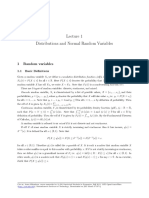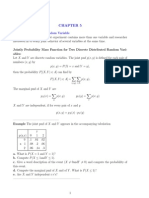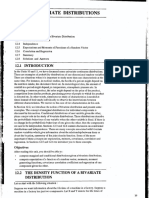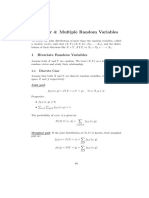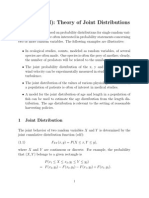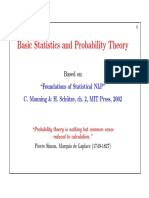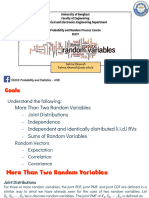0% found this document useful (0 votes)
21 views4 pagesStat Note4
This document provides an overview of random variables, focusing on random vectors, joint distributions, and their properties. It defines random vectors, joint distribution functions, and conditional densities, along with examples to illustrate these concepts. Additionally, it discusses the statistical independence of random variables and the calculation of mean and variance for random vectors.
Uploaded by
sally0824sCopyright
© © All Rights Reserved
We take content rights seriously. If you suspect this is your content, claim it here.
Available Formats
Download as PDF, TXT or read online on Scribd
0% found this document useful (0 votes)
21 views4 pagesStat Note4
This document provides an overview of random variables, focusing on random vectors, joint distributions, and their properties. It defines random vectors, joint distribution functions, and conditional densities, along with examples to illustrate these concepts. Additionally, it discusses the statistical independence of random variables and the calculation of mean and variance for random vectors.
Uploaded by
sally0824sCopyright
© © All Rights Reserved
We take content rights seriously. If you suspect this is your content, claim it here.
Available Formats
Download as PDF, TXT or read online on Scribd
/ 4








